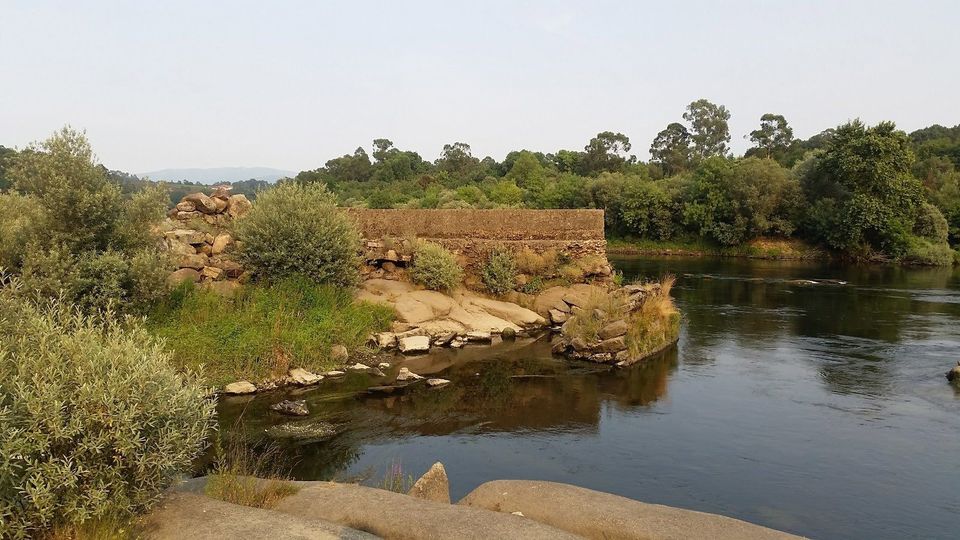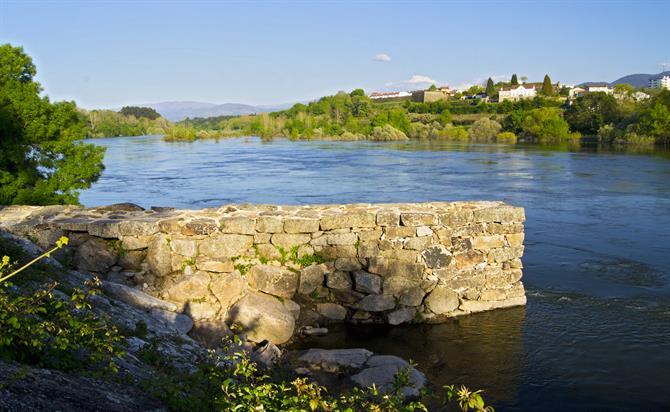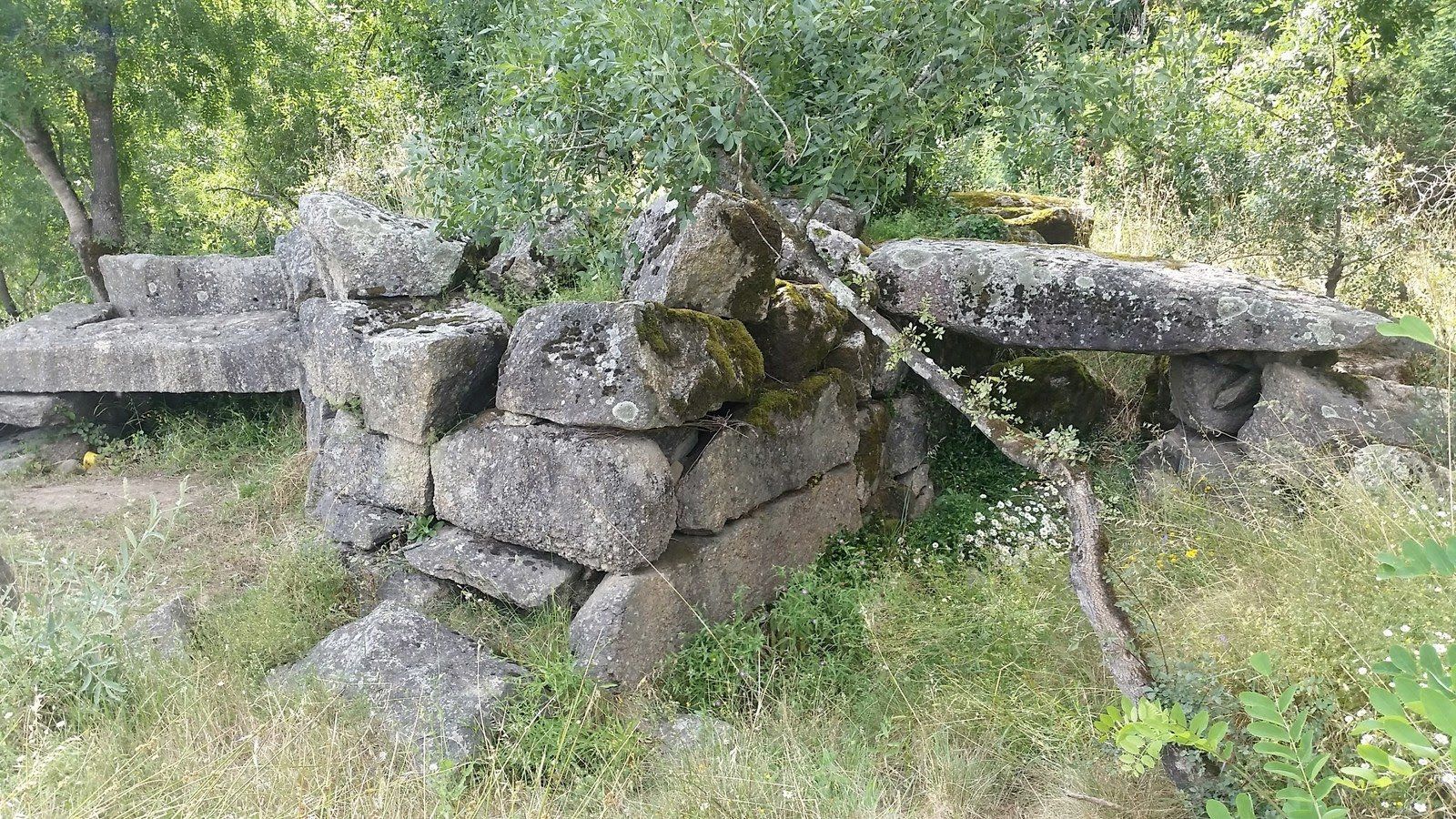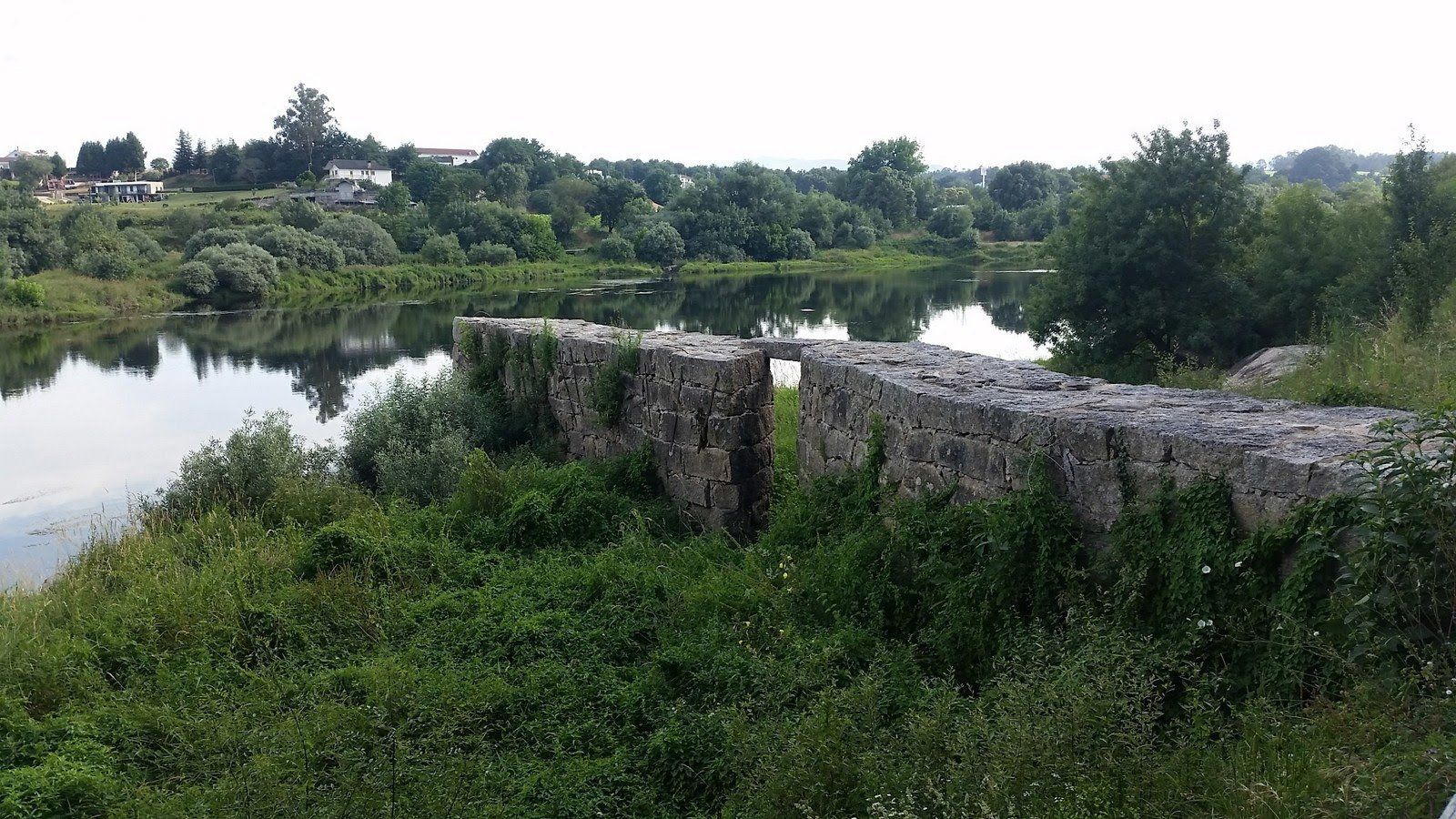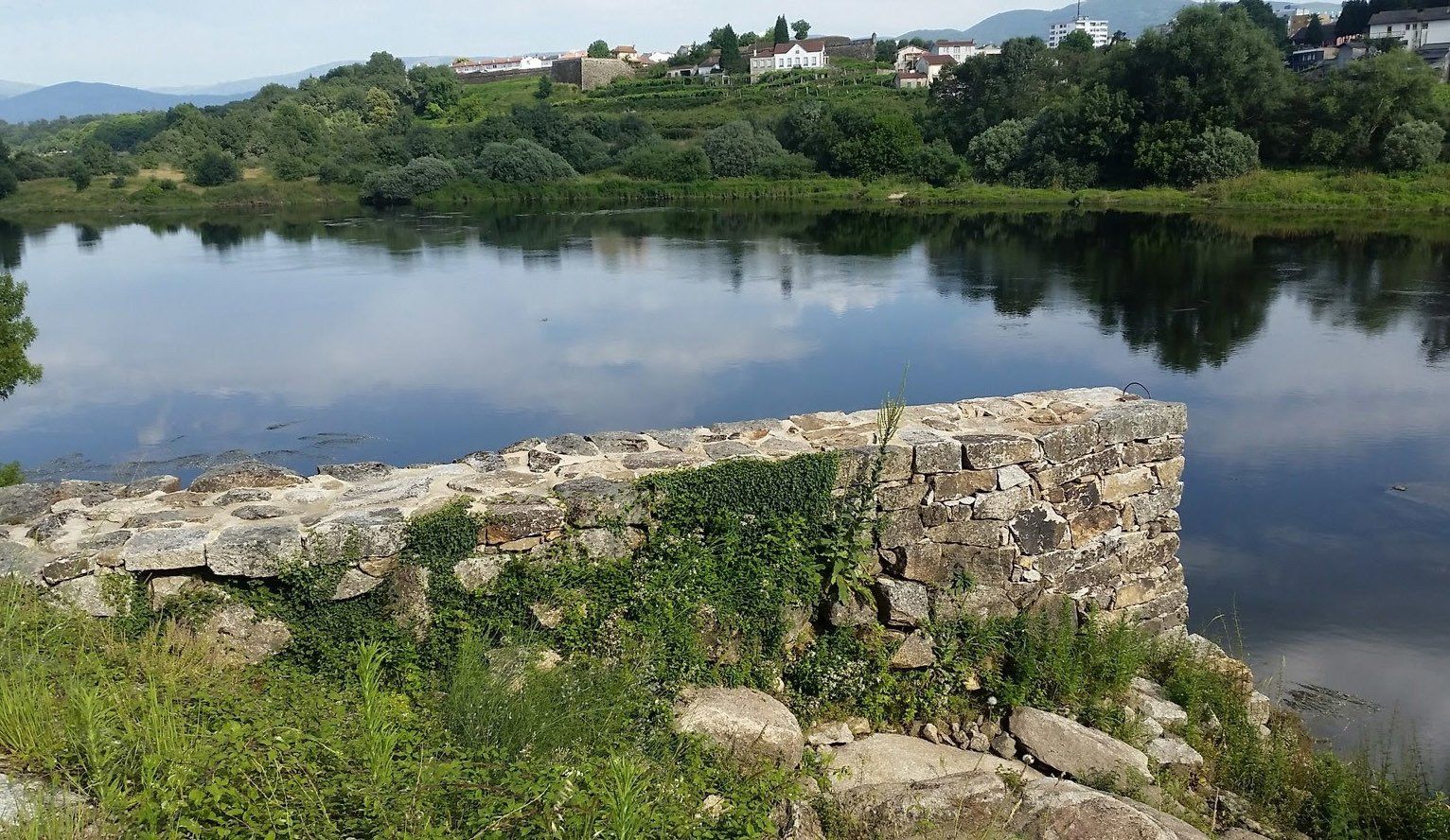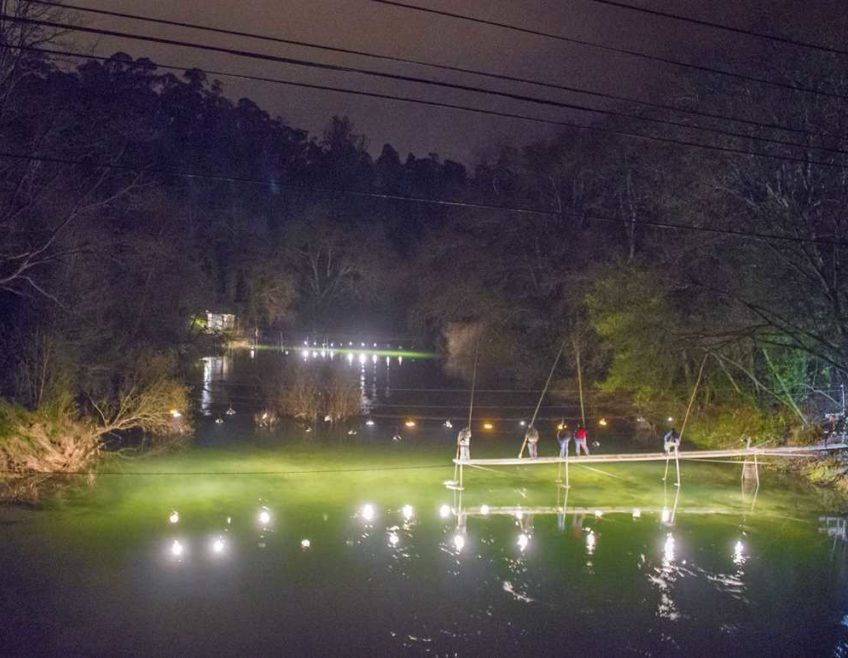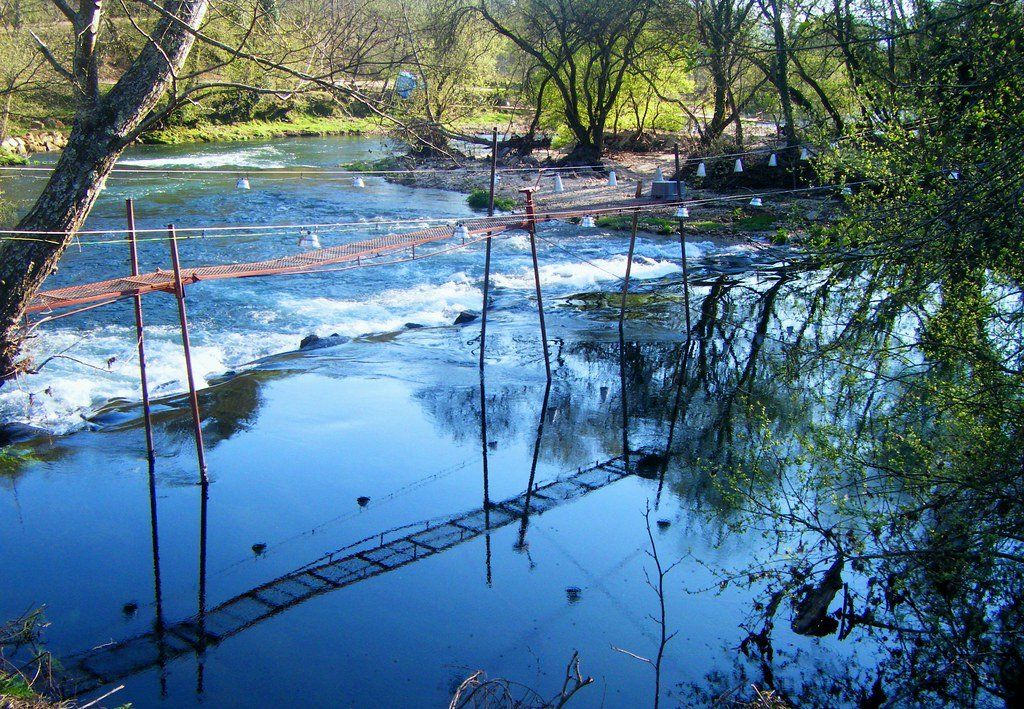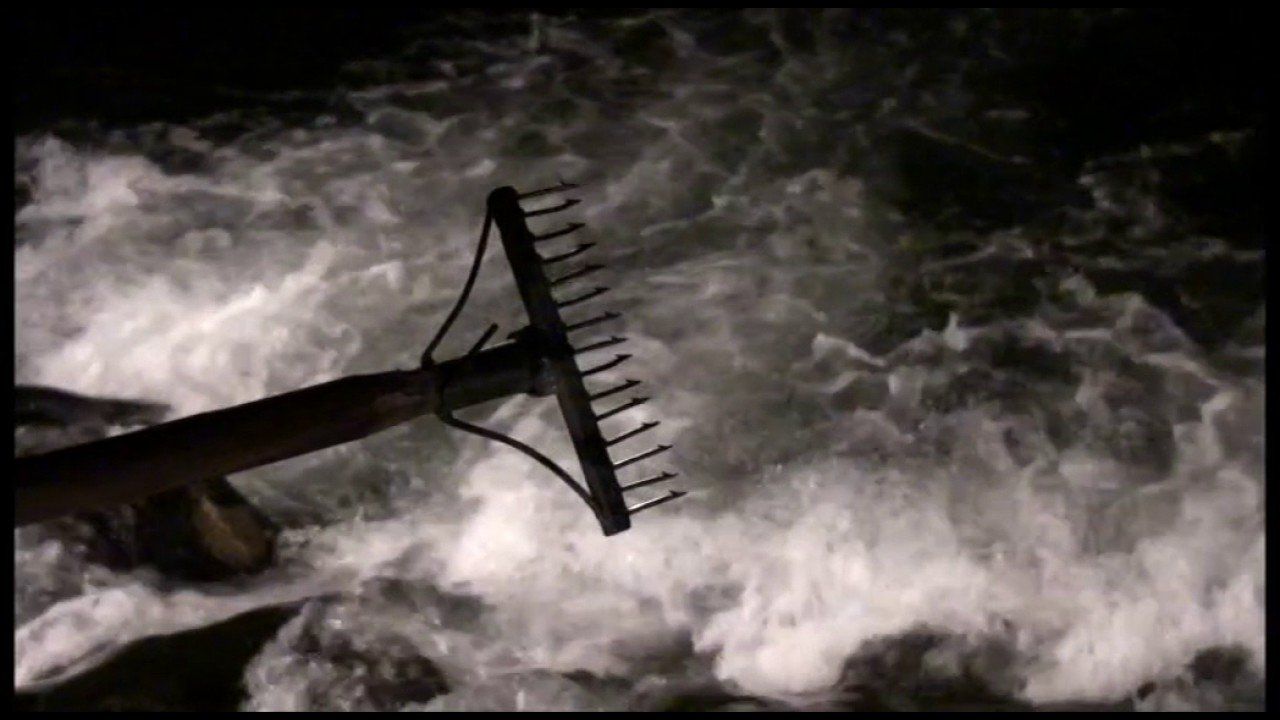Pesqueiras Route
PESQUEIRAS OF THE RIVER MIÑO
Like true stone colossi anchored on the banks of Father Miño rise the “pesqueiras”, constructions made to capture the queen of our rivers, the lamprey.
El Miño has always been one of the great sources of resources for the riverside populations. Trouts, salmon or lampreys were caught from the fisheries in "pots" and "viturons", as a means of sustenance and complement to the family economy.
But, without a doubt, the most precious asset that has offered us, and still continues to offer, the Miño river is the lamprey. Their importance is well known since ancient times at the table of the Roman emperors, bringing them alive from Galicia to Italy.
However, it will not be until the Middle Ages when there is reliable documentation of this type of buildings, at which time the ownership of the fisheries and the payment of rents and taxes in the form of lampreys to monasteries such as those of Melón and A Franqueira, as well as certain feudal houses in the area.
Currently, three are the fisheries rehabilitated in the municipality of Salvaterra de Miño, which depart from the mouth of the Tea River, following the river walk from the Salvaterra fortress, upstream and to the border with the municipality of As Neves. The three fisheries are those of Maximina, that of A Bucheira and that of Mon, stone constructions that were rehabilitated in 2015.
Most of the fisheries have their own name and their exploitation passes from parents to children through family inheritance.
With more than 20 meters in length each and between 3 and 5 meters in height, the "poios" or walls look like great walls that sit on the river bed. Between the stones of the "poios" the "viturons" were moored, large conical nets, where the captures entered, but were not able to leave again.
STAKED OF THE RIVER TEA
Over the Tea river, a tributary of the Miño river, the stakes rise, which are ingenious constructions made of wood and iron, the fruit of ancient knowledge passed down through generations.
Similar to large ships overturned on the banks of the river, they are a unique method for capturing the lamprey, very different from the methods used in other rivers in our territory such as the Miño or the Ulla. Here, at the Tea, catches are not made by means of pots or vitreons, but rather by using “fisgas”, which are long wooden rods topped with an iron comb that consists of a certain number of hook-shaped spikes and which They are used to capture the lampreys by nailing them as a spear.
The nearly 50 existing positions in the Tea are granted by lottery and fishing is only allowed between the months of February and April. At night, under the light of electric lamps, people who are assigned to use lunges, fish in shifts of odd and even days, stalking the lampreys that move across the sandy bottoms as they go up the river to spawn.
Photo gallery
The first written reference we have about fisheries dates back to the 12th century, although many believe that their origin is lost at the time of the Roman Empire and there are even those who go much further in time and affirm that they were already used at that time. pre-roman.
On this occasion we are going to review the “pesqueiras” of the Salvaterra de Miño council, from the mouth of the Tea to the border with As Neves. Currently, up to five fisheries are recognizable and three of them have been rehabilitated at the end of 2015. To locate them, simply follow the river walk from the Salvaterra fortress upriver.
First we will see that of Maximina, currently a single block and a little later on the same promenade that of Bucheira that has two "poios" and is therefore of the "vituron" type. Finishing the walk and continuing along the abandoned sandpit that in its time was charged with a thermal spring and following a path on the edge of Miño we will arrive at that of Mon. We will still be able to follow the path and find seasons 341 covered by herbs, where we can already see the 20th century concrete on it. Continuing the path will take us to the banks of the river and there we will be able to see the remains of the O Vao fishery, which originally had several “poios”. Today his remains rest on the sand although a couple of holes are left intact through which the vitret was fitted. Upstream and already bordering As Neves is the O Cachón fishery where we can see the old granite blocks at the bottom and above it a modern concrete “poio”.




